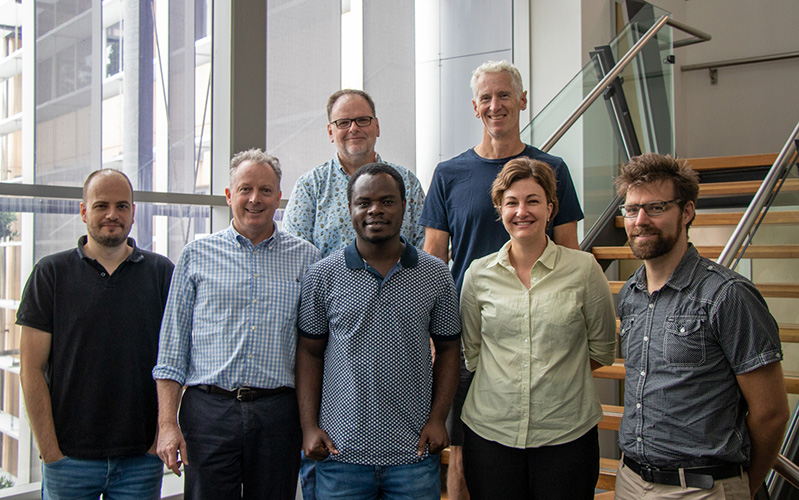What do wind turbines, electric cars, mobile phones, night vision goggles, and the fantastic sound of your tiny portable speaker all have in common? They all rely on rare earth elements (REE) in their manufacture.

Researchers from UQ’s Sustainable Minerals Institute (SMI), Faculty of Engineering Architecture and IT (EAIT), and School of Environmental and Earth Sciences (SEES) are exploring more sustainable methods of extracting Queensland’s rare earth elements (REE) as part of a new government-supported project.
The 4.5 year, $920,000 project is part of SMI’s Complex Orebodies strategic program and supported by the Geological Survey of Queensland (part of the Queensland Department of Natural Resources, Mines and Energy) through its recently-announced New Economy Minerals Initiative.
SEES Research Fellow Dr Emma Gagen said the project will help ensure future methods used to access REEs in Queensland are informed by research.
“The pathways from discovery to mining, extraction and sale are much more poorly understood for REEs than they are for more commonly-sought elements like gold or copper,” Dr Gagen said.
“This project aims to provide explorers with a toolbox of REE extraction approaches that will allow them to better understand what they should be looking for in terms of ore grades, mineralogy and other important factors.
“The range of different REE mineral styles in Queensland as they are currently known will be examined in a component led by the SMI’s W.H. Bryan Mining & Geology Research Centre (BRC).
“This knowledge will be used as a basis to consider a range of new extraction approaches, including innovative comminution and separation, hydrometallurgical extraction, geomicrobiological technologies and phytomining.”
UQ School of Chemical Engineering Associate Professor James Vaughan said a multidisciplinary approach to the project is key.
“This project aims to give explorers a toolkit of extraction approaches for REE commodities which will allow them to better understand what they should be looking for in terms of ore grades, mineralogy and other important factors," he said.
“Rare earth elements are actually present in a wide range of ores and residues, and the challenge is to identify the feed materials that can be most efficiently processed into saleable products. This requires both geologists and metallurgical engineers to work together and to be seeking improved approaches”
SMI BRC Centre Director and Complex Orebodies Program Leader Professor Rick Valenta said accessing critical mineral supply is vitally important for sustainable development.
“Our modern lifestyle and any hope we have for a low-emissions future are tied to the future supply of tongue-twisting rare earth elements like dysprosium, neodymium, and praseodymium", Professor Valenta said.
“Demand for REE has doubled since 2000 and is set to double again in the next ten years, but the current supply is alarmingly concentrated in areas vulnerable to being restricted.
“If this demand is to be met governments and industry will need put resources into discovering new orebodies, improving the efficiency of mining and processing, emphasise the role of recycling, and re-examine social aspects of mining.
“SMI, in conjunction with its UQ and external partners, is uniquely placed to assist with this challenge due its multidisciplinary expertise and experience with applied research."
For more information on the importance of unlocking orebodies, visit SMI’s Complex Orebodies strategic program webpage.



